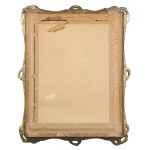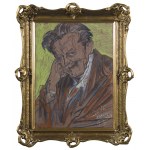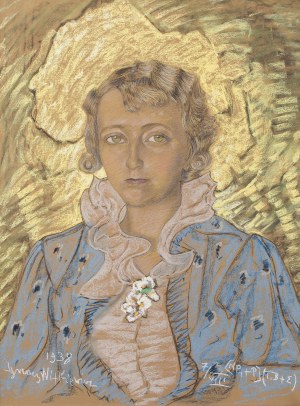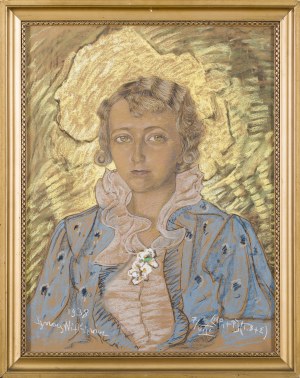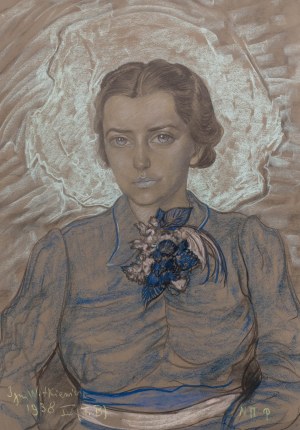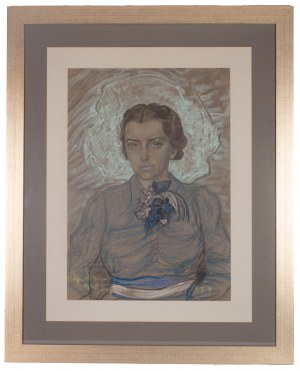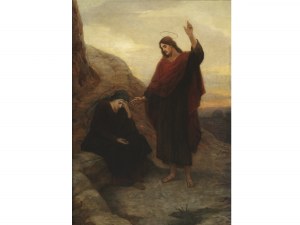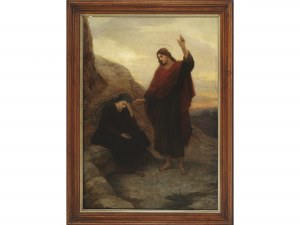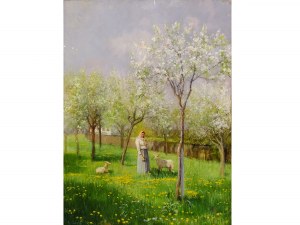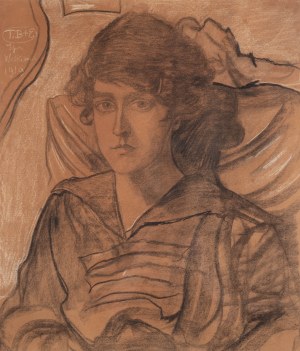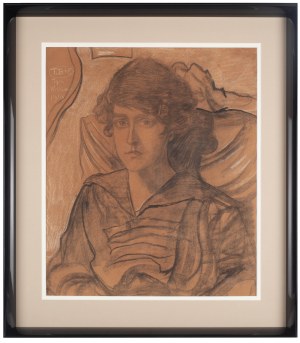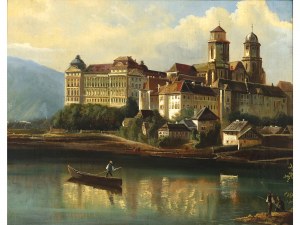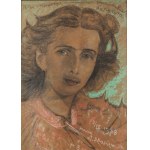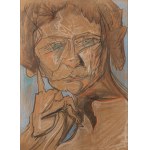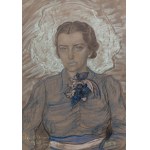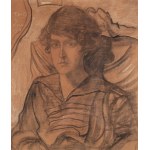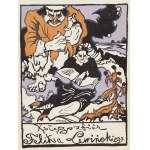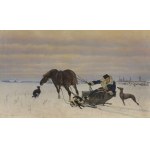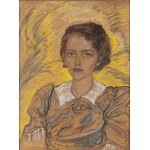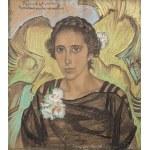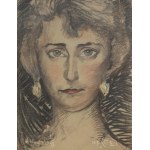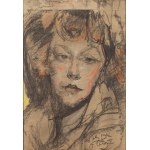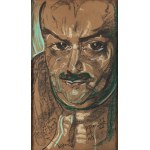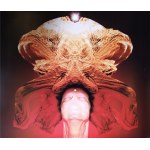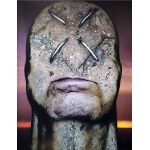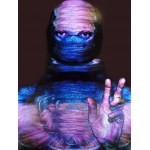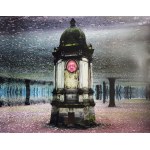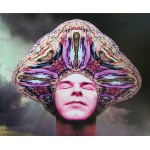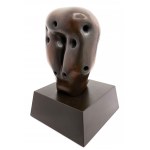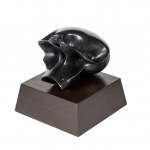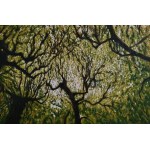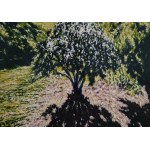64.0 x 47.2cm - pastel, beige paper signed p.d. obliquely: Belsekierskie | namitki | Witkacy | 1923 | T.D [in circle].
The painting has an expert appraisal by Dr. Anna Żakiewicz dated May 2022.
Provenance: the painting comes from the family of the portrayed.
The portrait of Czeslaw Jankowski was painted two years before the official founding of the Portrait Company. It was classified as type D, in which the artist imitated a specific type of expression characteristic of images created under the influence of alcohol and/or drugs, but in this case done completely "sober." The artist made relatively few of these portraits, probably due to the rather high degree of difficulty in achieving the desired effect. However, Jankowski's image fulfills these assumptions. The model has been treated freely - the face, exaggeratedly, even caricatured with wrinkles, is supported by a significantly deformed right hand, and the color of the blue eyes corresponds to one of the colors of the stripes of the robe, which simultaneously contrasts with the rust stripes.
It should be noted that the deformities in the portraits Witkacy allowed himself mainly in relation to friends. This circle included Czeslaw Tomasz Ignacy Jankowski (1857-1929), a poet, publicist, journalist, translator of fiction, theater and literary critic and political and social activist. He was also interested in history and ethnography, especially borderland history. He lived and worked mainly in Vilnius, but also in Warsaw.
He was an acquaintance of Karol Szymanowski and Jaroslaw Iwaszkiewicz, with whom Witkacy was also friends. The artist made at least three portraits of Jankowski, one of which (from 1922) is now in the National Museum in Warsaw.
In 1927 Jankowski wrote a perverse review of Witkacy's novel Farewell to Autumn, which had just been published, generally full of excoriating "morbid imagination" and "wallowing in swine," but which ends with the unexpected statement that the novel is "a masterpiece of mock mystification, at which no one excels like this in Poland, or even perhaps in Europe" (Swine "metaphysical", "Słowo" 1927, no. 210, p. 3).
Witkacy also befriended Jankowski's daughter Irena, with whom they went to the mountains together, went skiing, and the artist frequented the fajfs she organized. Of course, he also made portraits of her, as well as of her husband Marceli Szarota, a Lvov journalist.
The inscription on the portrait "Belsekierskie / namitka" is rather puzzling. Namitka is an old-fashioned, dialect term for a white forehead band that is part of a married woman's headpiece encountered in the works of Jozef Ignacy Kraszewski, Stefan Zeromski, Jaroslaw Iwaszkiewicz and the poet Wladyslaw Syrokomla, who was particularly fond of Jankowski. An exact explanation would have to be sought there, or in Jankowski's own works, and given that Witkacy sometimes, exceptionally, allowed the presence of third parties in portraits, he always noted this in the images (mainly in the form of initials), these "Belsekierskie namitki" may mean some married women defined by the artist in a sophisticated way, referring to literary tradition.
Following the expert opinion of Dr. Anna Żakiewicz
Stanisław Ignacy Witkiewicz (Warsaw 1885 - Jeziory in Volhynia 1939) was educated at home under his father, Stanisław Witkiewicz. In 1903 he passed his high school diploma in Lviv. In 1904 he began traveling, including to Vienna, Italy, Munich, Paris and London. Between 1904 and 1910 he studied at the Academy of Fine Arts in Cracow with Prof. Jozef Mehoffer, interrupted by periods of study with Władysław Ślewiński. In 1914 he left with Bronislaw Malinowski's expedition to Australia, and from there went directly to St. Petersburg, where he enlisted in the Russian army after the outbreak of WWI. In Russia, he witnessed the Bolshevik Revolution.
After returning to the country in 1918, he became a member of the "Formists" group, with which he exhibited from 1918 to 1922. In the painting of this period, he came closest to putting into practice his own theory of Pure Form, formulated during the war (it also applied to drama). Along with Leon Chwistek, he was the main theoretician of the grouping. After 1924, he operated as a one-man "S. I. Witkiewicz Portrait Company'' making portraits on commission. At the same time, he continued his literary (dramas, novels) and philosophical work, but above all he practiced the "art of living" that united all forms of his activity, appreciated only at the end of the 20th century. He committed suicide at the beginning of World War II, the day after the Soviet aggression against Poland.
Recently viewed
Please log in to see lots list
Favourites
Please log in to see lots list




